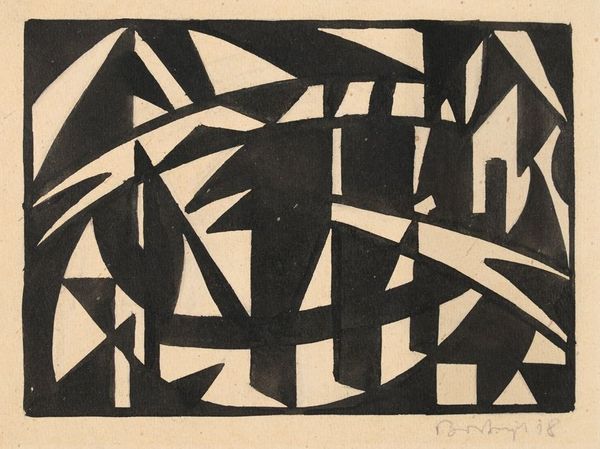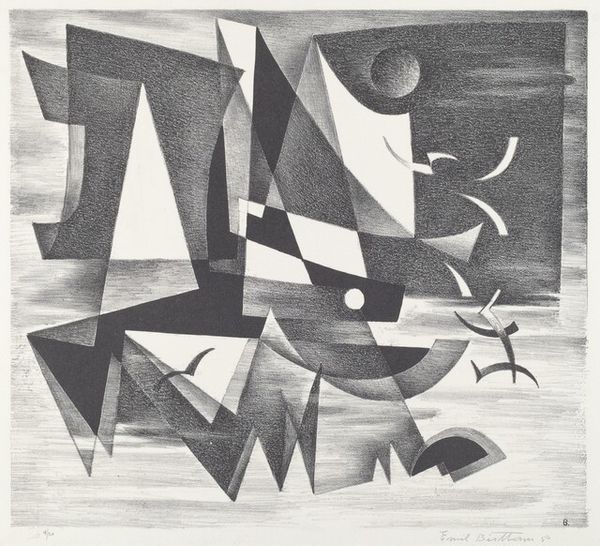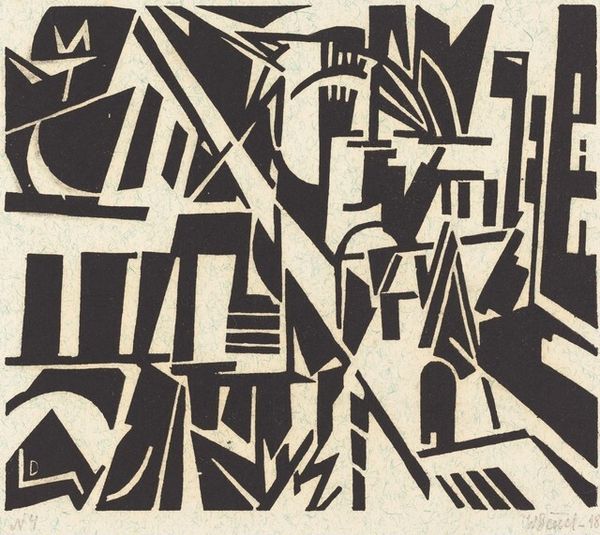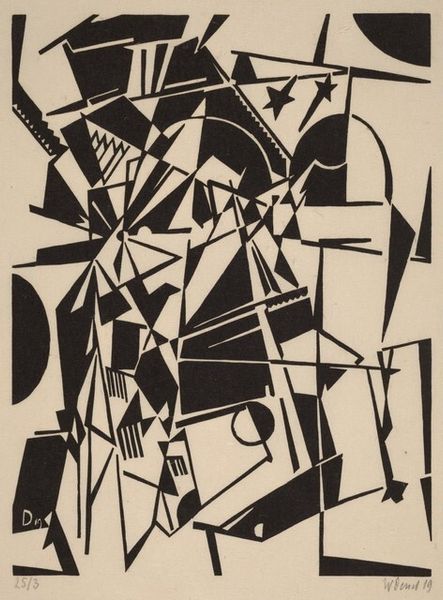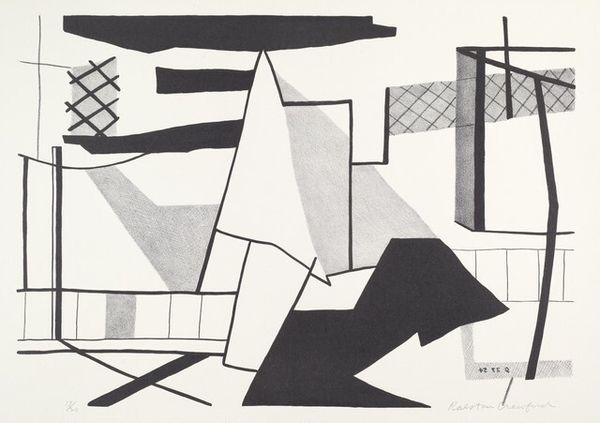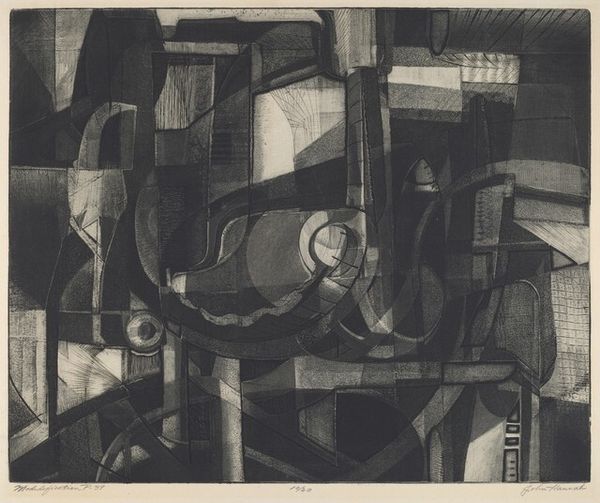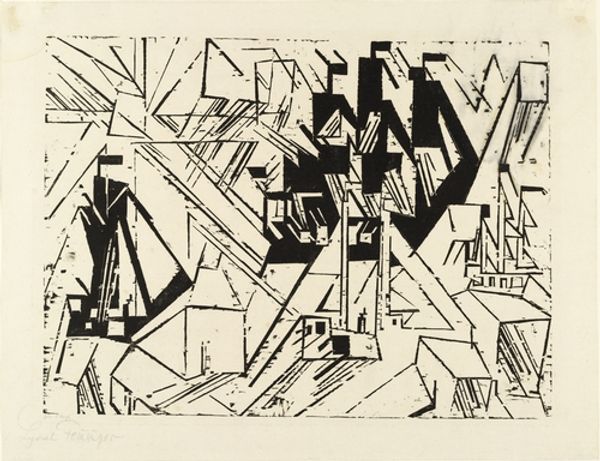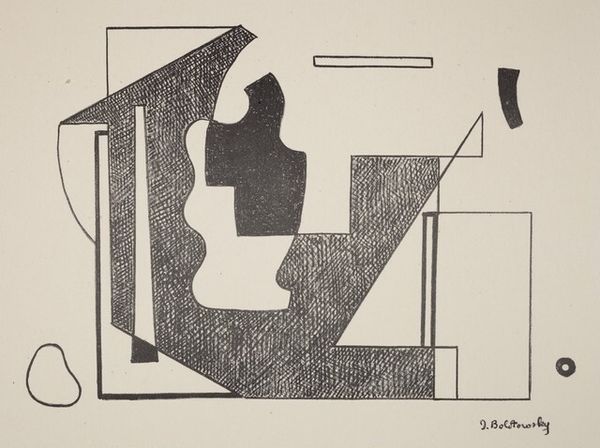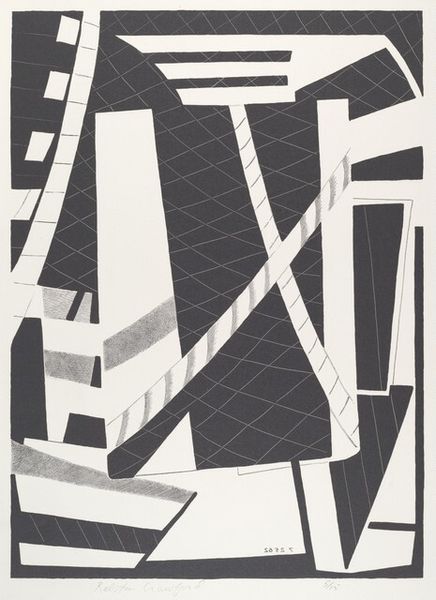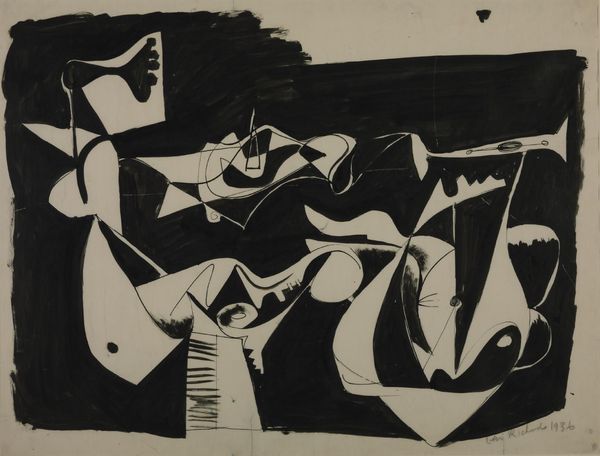
print, woodcut
#
cubism
# print
#
woodcut
#
geometric-abstraction
#
abstraction
#
modernism
Dimensions: Image:229 x 175mm Sheet:303 x 234mm
Copyright: National Gallery of Art: CC0 1.0
Curator: Looking at this stark, graphic print by Vaclav Vytlacil, dated 1937, the immediate sense is of dynamic forms rendered in the contrasting blacks and whites of a woodcut. Editor: It does have a boldness, a very deliberate construction. The sharp angles seem almost combative against those textured, rounded shapes. It feels quite confrontational, especially given its date, looming towards the start of the Second World War. Curator: I think the woodcut medium is vital here. Consider the labor involved, the very physical process of carving away at the wood. That subtractive process of manually excavating to arrive at these precise geometric forms adds another dimension. You cannot get a perfectly straight line using this method. Look how rough the carving seems near the center, there’s something interesting about the material imperfections when used to depict very rational forms of geometry. Editor: Exactly, and the artist chose abstraction, not representation, during a period rife with social and political upheaval. I think there is significance there. There's an intentionality to that visual language, and perhaps a distancing from the harsh realities many faced, but the shapes, while abstract, could evoke many different symbols and allude to global anxieties felt during this time. Curator: I see abstraction, but I’m less convinced it turns away. What comes to my mind is the Bauhaus aesthetic in its concern with functionality and a universal visual language—forms that can be replicated and serve the purpose for more widespread aesthetic availability to society through mass production of affordable art and design. Editor: Perhaps. Thinking about what that mass production really means for artists at the time—do you think it devalues craft? Or rather, does this piece argue that there is power in something handmade? It feels significant that it is hand-carved when this also brings to mind industrial and construction imagery. Curator: Interesting point! And given the geometric vocabulary, the repetition, the starkness, it lends itself readily to such reproduction. Editor: Ultimately, this image provides a stark but provocative statement on the era that birthed it. Curator: Indeed, there is a lot here to reflect on. From technique to history.
Comments
No comments
Be the first to comment and join the conversation on the ultimate creative platform.
